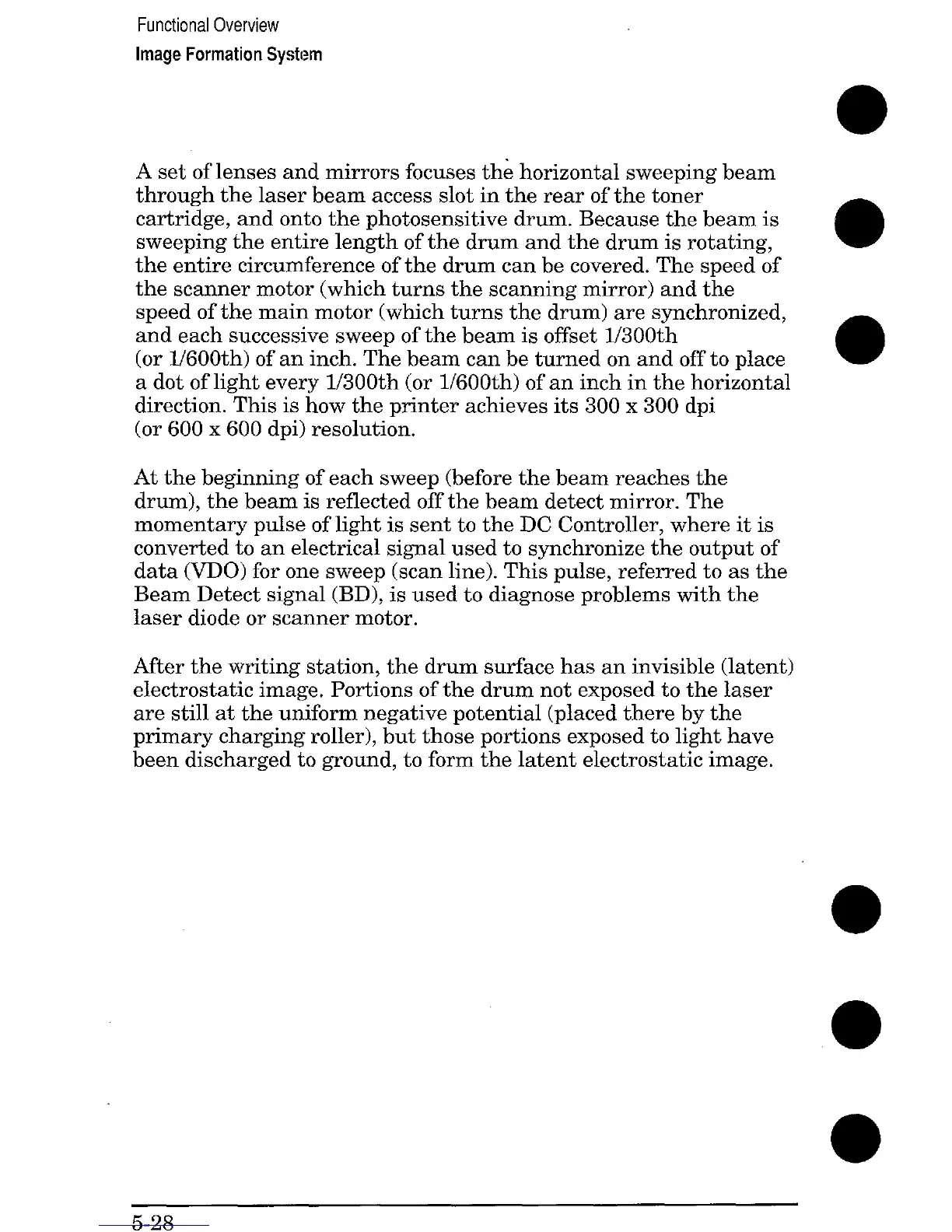Functional Overview
Image Formation System
A set of lenses and mirrors focuses the horizontal sweeping beam
through the laser beam access slot in the rear of the toner
cartridge, and onto the photosensitive drum. Because the beam is
sweeping the entire length of the drum and the drum is rotating,
a
the entire circumference of the drum can be covered. The speed of
the scanner motor (which turns the scanning mirror) and the
speed of the main motor (which turns the drum) are synchronized,
and each successive sweep of the beam is offset l/300th
(or l/600th) of an inch. The beam can be turned on and off to place
●
a dot of light every l/300th (or l/600th) of an inch in the horizontal
direction. This is how the printer achieves its 300x 300 dpi
(or 600 x 600 dpi) resolution.
At the beginning of each sweep (before the beam reaches the
drum), the beam is reflected off the beam detect mirror. The
momentary pulse of light is sent to the DC Controller, where it is
converted to an electrical signal used to synchronize the output of
data (VDO) for one sweep (scan line). This pulse, referred to as the
Beam Detect signal (BD), is used to diagnose problems with the
laser diode or scanner motor.
After the writing station, the drum surface has an invisible (latent)
electrostatic image. Portions of the drum not exposed to the laser
are still at the uniform negative potential (placed there by the
primary charging roller), but those portions exposed to light have
been discharged to ground, to form the latent electrostatic image.
5-28
